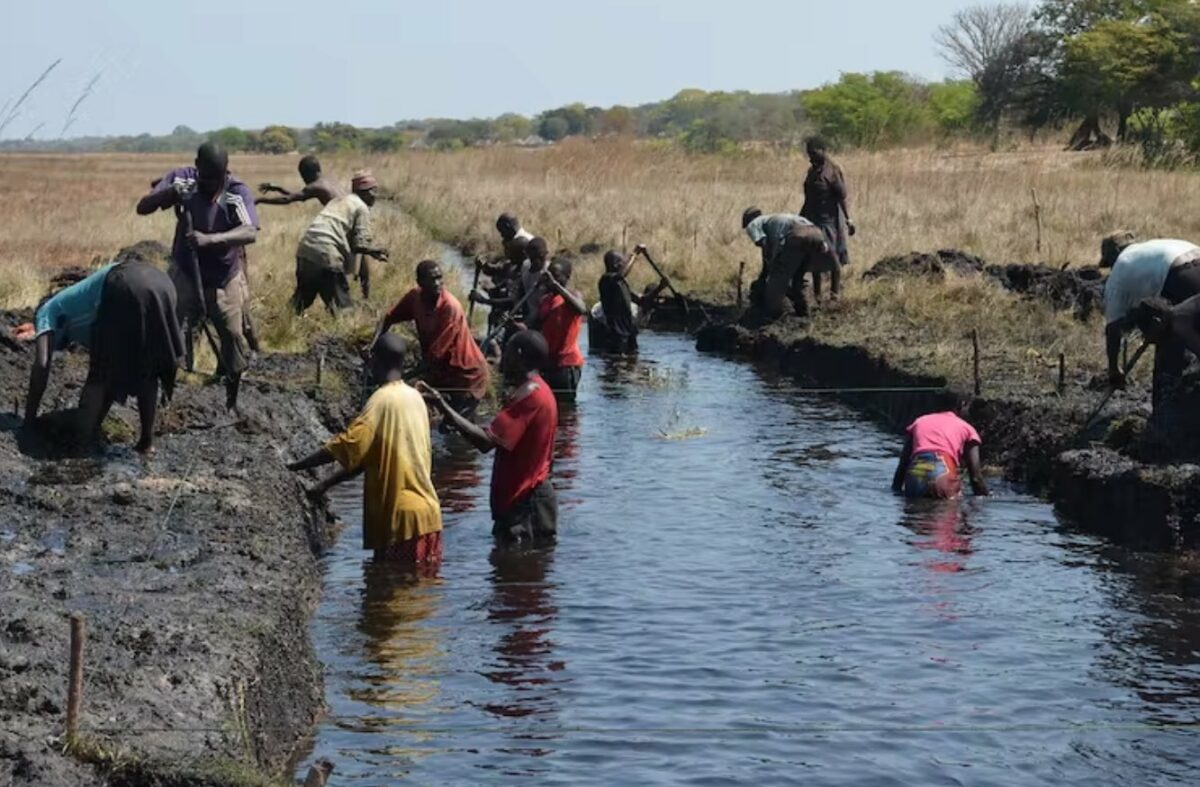Climate change and environmental policy measures have become a central part of planning for sustainable development and avoiding crises such as food and water insecurity.
Because “going green” is such an urgent issue now, some people may think it’s a newcomer to policy agendas. This may seem especially likely in developing countries, where other challenges have long called for attention.
For my PhD research I’ve been exploring the history of climate-related policies and interventions in Zambia since independence. I looked at when and how environmental issues became part of Zambia’s development planning. My aim was to extract lessons about what works and what doesn’t, to inform future development planning and climate change responses.
These lessons are useful because of what Zambia stands to gain or lose. Zambia’s forestry sector, for example, provides a daily subsistence lifeline for rural communities. The forest sector contributes about 5.2% to the nation’s GDP, and provides formal and informal employment to about 1.1 million people. The forest sector is, however, the greatest contributor to greenhouse gas emissions and is under increasing pressure from deforestation, with an annual deforestation rate of 149,876 hectares. Zambia is ranked among the countries with the highest deforestation in the world.
The government of Zambia has been publishing development plans since independence in 1964. I searched 15 plans dated from 1966 to 2021 for references to terms related to climate change and the environment, and I interviewed some key respondents who had been involved in development planning.
The main lesson from the transitions in development planning is the need to learn from past experiences and to contextualise such lessons in present conditions.
Development policy over the years
After independence, all the newly liberated African countries, including Zambia, focused on improving the socio-economic wellbeing of their citizens. Making and implementing development policy was a priority.
Zambia’s first president, Kenneth Kaunda, oversaw the country’s first four national development plans. The first, 1966 to 1970, was aimed at restructuring the newly independent country away from colonial systems. As early as this, the plan identified favourable climatic conditions as vital for productivity and economic growth – especially in agriculture. Hence the government sought to invest in “expansion of the climate observing network”, such as weather stations.
From 1970 to 1979, the government similarly earmarked resources for building capacity to conserve natural resources.
From 1979 to 1983, reference to weather conditions and the climate became more prominent. The government of Zambia was increasingly concerned about strategic income generating crops such as cotton. It identified the effects of weather conditions on crop harvests as a key factor in poor economic performance. Consequently, it proposed investments in climate research. By 1989, weather issues were firmly part of Zambia’s development planning.
The second era of national development planning, from 1990 to 2000, was characterised by sector-based planning. The National Commission for Development Planning was abolished and no national development plan was formulated during the period. Evidence from interviews with key respondents points to an absence of a coordinated national drive for environmental and climate change policy in this era.
The shifts in emphasis continued over the years. The Transitional National Development Plan and the Poverty Reduction Strategy Paper, implemented concurrently in 2002, explicitly identified the importance of environmental factors in reducing poverty.
In the fifth national development plan, 2006 to 2010, Zambia began to more clearly address climate change as a topical issue. The sixth plan and its revision, 2011 to 2016, built on the previous plan. For example, it mentioned policy to reverse deforestation, wildlife depletion and land degradation.
The seventh plan included climate change across all sectors. From 2017 to 2021, institutional arrangements and coordination were strengthened.
Alongside the seventh plan, Zambia’s government proposed an Economic Recovery Programme. Though it focused on the economy, it explicitly identified climate change. It highlighted measures such as formulation of climate legislation, establishment of a national climate change fund and strengthening public sector capacity to appraise climate change initiatives.
The current (eighth) national development plan has four focus areas:
- economic transformation and job creation
- human and social development
- environmental sustainability
- good governance.
Zambia, for the first time, has placed a high premium on environmental and climate change issues by dedicating a whole strategic focus area to them. The previous plans did not have this. The climate objectives got lost in the details of poverty reduction, for instance.
Are we there yet?
From the 1960s to date, Zambia has had seven presidents and 11 national development plans. These plans have been interposed with economic recovery programmes in one form or another. In this context, Zambia has progressively incorporated green-based policy interventions.
In my review of the progress of environmental and climate change inclusion in development plans, I observed the significant influence of external stimuli, such as the Paris Agreement, on developing countries like Zambia. The country has also made domestic commitments to greening the country as far back as 1964.
Most, if not all, of Zambia’s national development plans have provided a framework for both development and environmental action. Each plan has built on previous ones. But I also observed that there were times that Zambia registered reversals in both development planning and the environmental or climate change sphere.
A key lesson was the need for an implementation handbook to accompany policy pronouncements and plans. Implementation challenges amplified this lesson.
Moving beyond 2023, the government of Zambia seems to be committed to making climate change and environmental issues a priority. The current plan, for the years 2022 to 2026, has a stand-alone “environmental sustainability” pillar for the first time ever. This is a big step towards making climate change central in Zambia’s policy discourse. Now what remains is to carry out the plan.
This article is republished from The Conversation under a Creative Commons license. Read the original article.

